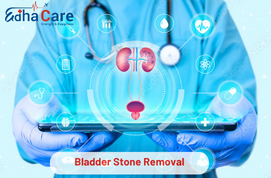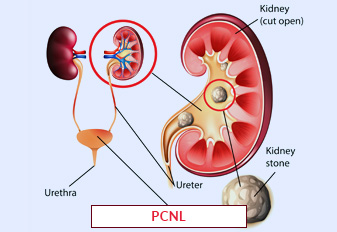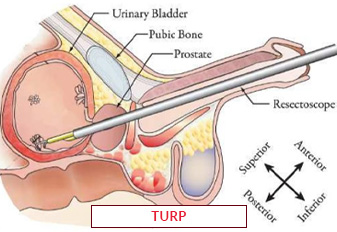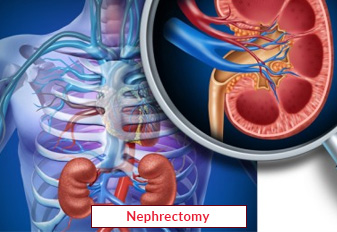Bladder Stone Removal

Bladder stones are hard mineral deposits that build up in the bladder; bladder removal for stones is a treatment designed to get rid of them. Urinary signs like discomfort, regular urination, difficulty urinating, and bleeding in the urine might be brought on by these stones. a number of factors, including the size and makeup of the stones, a urologist will usually execute the procedure, which may require multiple surgeries. Common techniques include open procedures for larger or more complicated stones, in which stones are broken down with laser therapy or ultrasound and then removed through an implanted cystoscope into the inside of the bladder. An effective bladder stone removal reduces pain, guards against problems like obstructions or infection of the urinary tract, and improves the patient's quality of life.
Book an AppointmentAbout Bladder Stone Removal
Symptoms: A bladder stone can cause discomfort or pain in the lower part of the abdomen or the pelvis, frequent peeing, difficulty empty a bladder totally, bleeding in the urine, and ongoing urinary tract infections (UTIs).
Causes: The formation of crystals and clump of minerals in urine that is concentrated is the usual cause of stones in the bladder. Dehydration from urinary tract infections, enlarged prostates, urinary disorders, retention of urine, and specific medical illnesses such as stones in the kidneys or metabolic disorders can all contribute to these disorders.
Remedies: The primary form of treatment for the condition is surgical bladder stone removal. Treatment options include surgeries that are minimally invasive, open surgery for larger stones, and cystolitholapaxy, which entails using ultrasound or laser treatment to break down the stones before removing them with a cystoscope. Moreover, changing your diet, consuming more water, and attending to underlying health issues are a few examples of preventative measures that may help decrease the frequency of recurring bladder stones.
Procedure of Bladder Stone Removal
Preoperative Evaluation: To determine the size, number, and position of bladder stones, the patient has preoperative assessments that include a review of their medical history, a physical examination, and imaging tests (such as CT or ultrasound).
Anesthesia Administration: During the process, anesthesia is given to the patient in order to assure their comfort and safety. This could involve either spinal anesthesia or general anesthesia, based on the surgeon's preference and the patient's health.
Cystoscopy: The bladder is reached through the urethra to implant a cystoscope, a thin tube equipped with a camera and light. With the cystoscope, the surgeon views the bladder and finds the stones.
Stone Fragmentation: To break up stones, techniques including laser or ultrasonic lithography are employed. By using these techniques, stones become smaller and easier to remove.
Stone Removal: The fractured stones are surgically removed from the bladder using a tube called a cystoscope and specialized equipment. Larger pieces can be removed with graspers, but smaller pieces can be washed away with irrigation.
Bladder irrigation: The bladder can be irrigated with a saltwater solution to ensure that all of the stone particles are emptied out and to prevent aggravating the urinary tract.
Postoperative Care: After the procedure, the patient is monitored in the recovery room until fully awake and stable. Postoperative instructions are provided, including wound care, pain management, and guidelines for resuming normal activities. Follow-up appointments are scheduled to monitor recovery and assess for any complications.
Require Assistance?
Get A Quick Callback From Our Healthcare Experts






